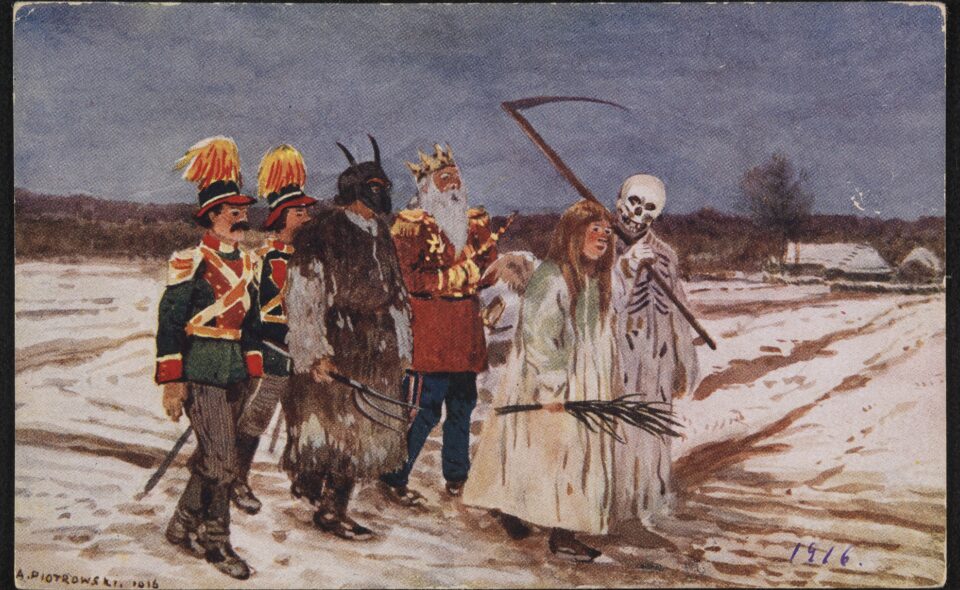Where did this custom come from, what was its meaning, what does it have to do with Christmas and what came first - carolers or carols? We hasten to explain.
Like most rituals around Christmas, the custom of caroling is older than Christianity and has its roots in the culture of the Slavs. It is closely linked to the Generous Feast - a Slavic festival celebrated in late December, during which our ancestors celebrated the victory of light over darkness. This special time lasted for 12 days - until January 6. No physical labor was allowed then and the only work allowed was feeding and caring for animals.
Each evening had its own meaning and symbolized one month in the coming year. No physical work was done then, except for tending and feeding the livestock. Time was spent feasting, meeting and just caroling.
Caroling was originally associated with conjuring fertility and fertility and its essence was the exchange of gifts. The carolers visited all the houses making the best wishes to the hosts and residents and divining good fortune and fertility and in return they received donations or delicacies such as sweets, nuts or dried fruits. They were gifted with so-called "szczodrakes" - dumplings or buns specially made for the occasion, and "stwurzunka" - bread in the shape of animal figures. It was very important to visit all the houses - skipping any farm was a very bad sign and heralded misfortune. Carolers not only made wishes but danced, showed off, acted out scenes. They were called cross-dressers because they dressed up - mostly as animals such as a bear, stork, ram or goat, which symbolized strength and vitality. Sometimes they were accompanied by a live horse.
The word "carol" itself had many meanings. It was called the rite itself, but also gifts and special "wishing" songs, as well as songs of welcome and praise in honor of the visited hosts. With the advent of Christianity, this custom, like many others, gained a whole new content and interpretation. Depending on the region, it also took on new forms. For example, in the Lublin region, walking with a goat became popular - one of the boys would cover himself with a sheet and in his hand hold a stick ending in a carved goat's head. Thus disguised, he entertained people and accosted girls. In Podlasie, on the other hand, caroling was done with masks of birds: storks or cranes. They also walked with a star, which symbolized the rebirth of the sun and the victory of light.
We encourage you to listen to the carol "Glory to God in the highest" performed by the Shumov Brass Band
Over time and with increasing Christian influence, the star began to signify the Star of Bethlehem. Carol groups featured shepherds, the Three Kings, death and the devil. Some of the groups were called "Herods" because in their performances they wove scenes from the birth of Jesus into folk themes. Walking with a goat was joined by walking with a nativity scene called a Bethlehem. This was especially popular in Silesia. The songs sung also changed - those with wishes were replaced by new carols telling the story of Christmas. Sometimes it was a combination of both: some stanzas spoke of the Lord's birth, others contained wishes, plus there was humorous content tailored to the people being visited. The time allotted for caroling also lengthened - it was not ended by the Feast of Epiphany, but by the Feast of the Presentation of the Lord on February 2.
In the late 17th and early 18th centuries, it became established to call Christmas songs carols, and since then the word has mainly been associated with this. A memento of earlier times is to call a carol a pastoral visit, during which the priest visits the homes of the faithful blessing them for the coming year.
There were many different forms of caroling in different regions of our country. Over time, the custom almost died out. Today the tradition is slowly being revived thanks to community centers and regional ensembles, which present their performances at various reviews and festivals. In some places, old customs and re-enactments are being restored as tourist attractions. One thing that does not lose its popularity is the singing of Christmas carols - this custom is still alive, present as far and wide as Poland, connecting generations. While singing, however, it is worth being aware of how many meanings the word carol has and the long history associated with it.
Text: Magdalena Trzaska
Featured photo polona.pl
Sources: Uryga J.; The Polish Year in the Life, Traditions and Rituals of the People, 2018

